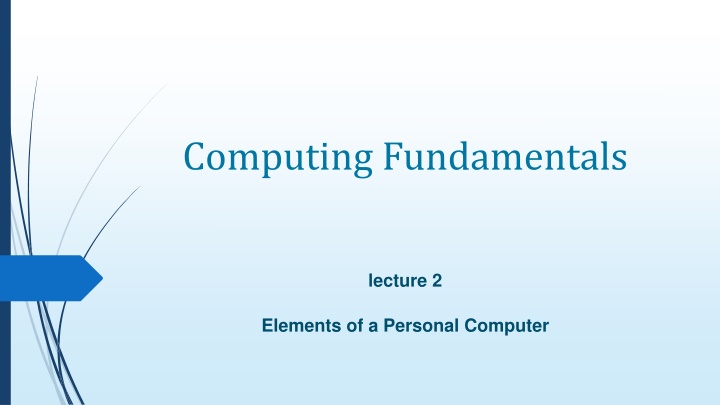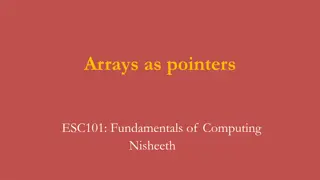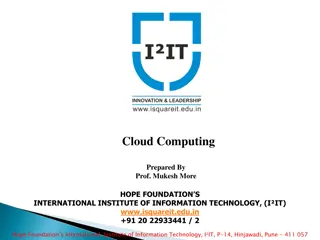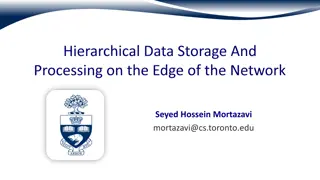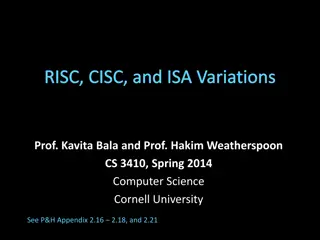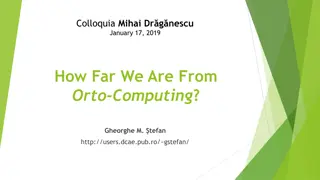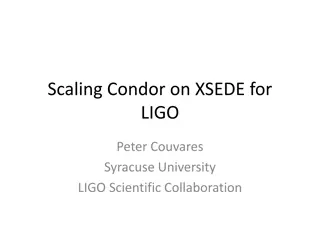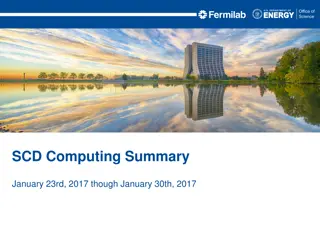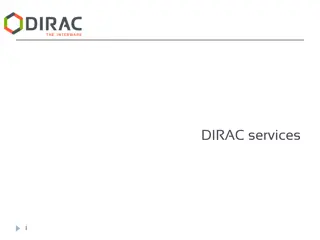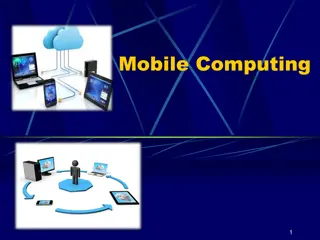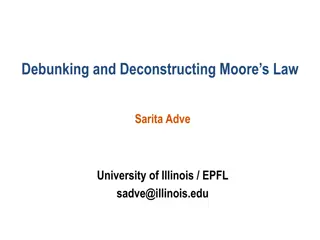Computing Fundamentals
The personal computer system consists of hardware and software components. Hardware includes the physical equipment such as the CPU, monitor, and printer. Software comprises coded instructions for the computer to execute tasks. The key hardware components are the CPU, I/O devices, RAM, and storage devices. The system unit houses crucial components like the motherboard, microprocessor, and power supply. Expansion slots allow for adding functionality through daughterboards. The motherboard is the primary circuit board containing the CPU, RAM, and ROM BIOS. The microprocessor, or CPU, acts as the computer's brain and processes instructions at high speeds. Understanding the components of a personal computer system is essential for its efficient operation.
Download Presentation

Please find below an Image/Link to download the presentation.
The content on the website is provided AS IS for your information and personal use only. It may not be sold, licensed, or shared on other websites without obtaining consent from the author.If you encounter any issues during the download, it is possible that the publisher has removed the file from their server.
You are allowed to download the files provided on this website for personal or commercial use, subject to the condition that they are used lawfully. All files are the property of their respective owners.
The content on the website is provided AS IS for your information and personal use only. It may not be sold, licensed, or shared on other websites without obtaining consent from the author.
E N D
Presentation Transcript
Computing Fundamentals lecture 2 Elements of a Personal Computer
Elements of a Personal Computer The elements of personal computer system: The equipment itself (computer, monitor, printer, etc.) is called HARDware because you can physically touch the components. Programs are called SOFTware as they function only while the computer is on. A software program is a set of coded instructions the computer uses in a series of on/off signals to carry out the user s task. These on/off signals begin when you first turn on the computer. Without electricity the computer cannot function.
Elements of a Personal Computer The four major hardware component parts called internal or external devices that make up the system include: central processing unit (CPU) input/output (I/O) devices random access memory (RAM) storage devices An internal device installs inside the system unit, and an external device plugs into a connection on the computer.
Looking at the System Unit The system unit or box is often the most important and expensive part of the computer. A desktop box or a tower box provides the same functionality. Separate devices inside the box perform specialized functions for the computer: Motherboard Microprocessor Power Supply Expansion slots
Looking at the System Unit Motherboard
Looking at the System Unit Motherboard largest electronic circuit board and consists of the CPU, RAM, and ROM BIOS. any smaller circuit boards plugged into prefabricated expansion slots are called daughterboards. expansion slots expand your computer by adding items such as graphics video card peripheral component interconnect (PCI) slots add new components or cards such as a modem input/output ports are connectors for various input or output devices such as USB mouse accelerated graphics port (AGP) slot is for a card that can handle 3-D graphics central processing unit (CPU) slot contains the microprocessor chip random access memory (RAM) slot is designed for these types of memory chips system clock determines time and date as set in the BIOS and runs on battery
Looking at the System Unit Microprocessor brain of the computer, located on the motherboard; also known as the central processing unit (CPU) instructions from the software programs and the user are received and executed here each model or type processes information and instructions at speeds measured in megahertz (MHz) or gigahertz (GHz):
Looking at the System Unit Microprocessor Processor (CPU) MHz or GHz 8088 (XT) 4 to 10 MHz 80286 (286 or AT) 8 to 16 MHz 80386SX/DX (386SX/DX) 16 to 33 MHz 80486 (486) 25 to 100 MHz Pentium 60 to 200 MHz 6x86 120 to 166 MHz Pentium (MMX) 166 to 200 MHz Pentium PRO 150 to 200 MHz Pentium II 200 to 400 MHz Pentium III 500 MHz to 1.2 GHz Pentium 4 or Pentium M 1.4 to 3.2+ GHz Pentium 5 5 GHz to 7 GHz
Looking at the System Unit Power Supply converts the AC (alternating current) coming from a wall outlet to DC (direct current) format must be between 5v and 12v, with 5v needed for the circuit boards and 12v for hard drives and CD-ROMs
Looking at the System Unit Expansion slots the openings at the back of a system unit, to allow you to add items such as sound cards, printers,network cards, etc.
Looking at Memory For a computer to store information, it needs to have memory chips installed. Memory is measured in bytes; in very simple terms, one byte is equal to one character. Officially, computers are developed using a numbering system of 1s and 0s. These two unique numbers represent the charged or uncharged nature of electricity and are known as the binary system. These two digits essentially make a bit and eight bits make one byte.
Looking at Memory The following shows how computer technology and the requirement for storage capacity have grown: Size in bytes 1 Kilobyte (KB) = 1,024 1 Megabyte (MB) = 1,048,576 1 Gigabyte (GB) = 1,073,741,824 1 Terabyte (TB) = 1,099,511,627,776 1 Petabyte (PB) = 1,125,899,906,842,624
Looking at Memory All data processed in a computer is made up of bytes, in various combinations as calculated by the computer. Every file used in a software program by the computer has a specific file size, based on the instructions for that feature. The larger the file is, the more memory you will need to process the information in the file and to store the file. Even if a file is not being stored on the computer, it still requires memory to process it.
Looking at Memory Read Only Memory Basic Input/Output System (ROM BIOS) a group of integrated circuits responsible for starting the computer, checking RAM, and loading the operating system occurs only when the computer is first turned on or when you have to restart the computer. does not perform any tasks other than to read the information and process it based on the device.
Looking at Memory Random Access Memory (RAM) located on the motherboard electronic pool of memory where the computer can hold programs and data RAM temporarily holds the current software program and the current data created by the user RAM is volatile it only works when the computer is turned on and the information vanishes when the computer is turned off.
Looking at Memory Cache Memory helps speed up the processor by storing frequently used instructions and data in this area. Dynamic RAM (DRAM) constantly changes, using what it needs based on the instructions being performed, and constantly refreshes itself. Static RAM (SRAM) is a specific amount of RAM that never needs to be refreshed, and is traditionally faster and more reliable.
